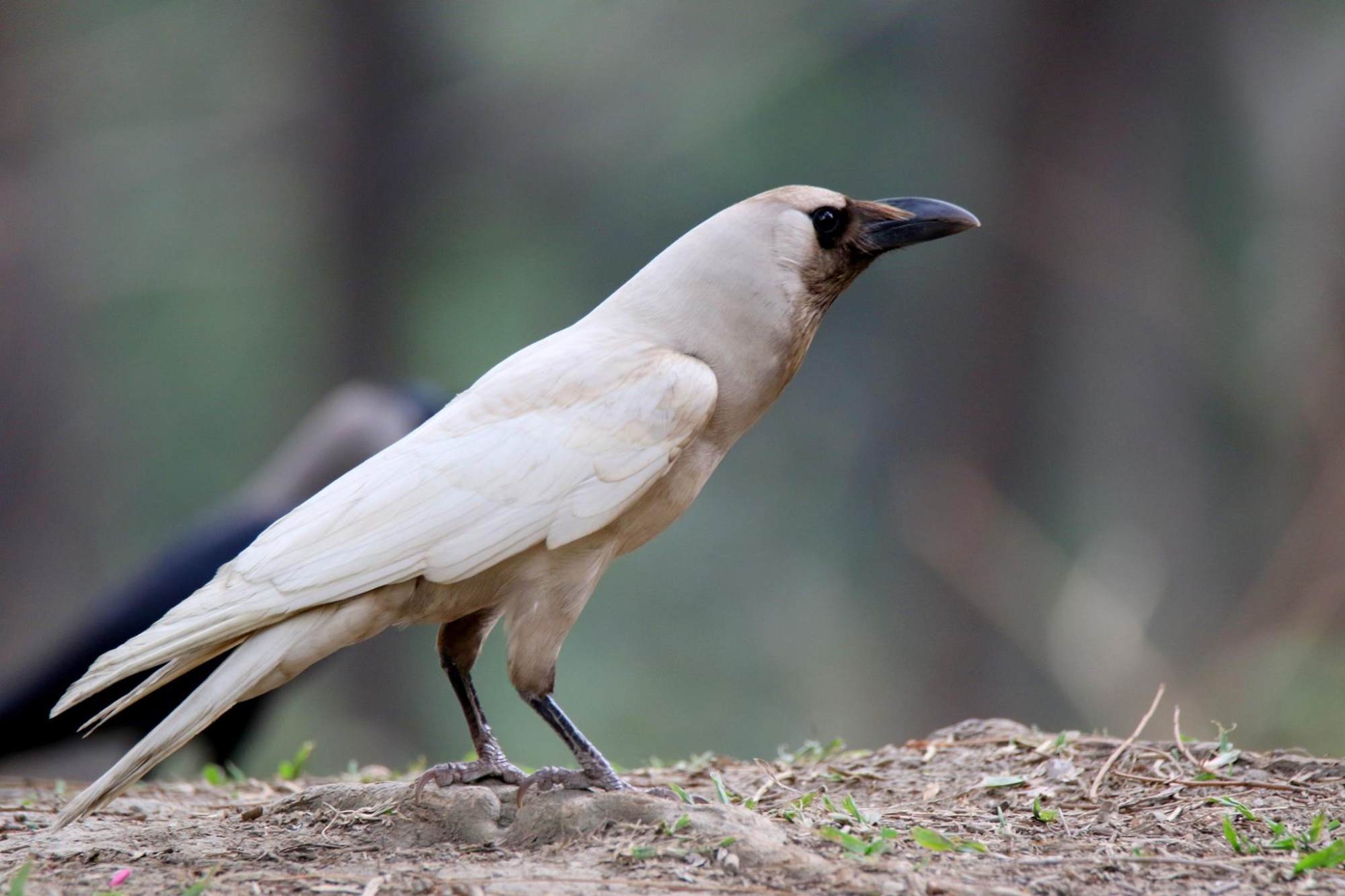
In Nepal, deformities in birds expose ‘worrisome’ impact of environmental degradation
- A study has documented abnormalities in birds, such as discoloured feathers and misshapen beaks, in 16 species across Nepal
- Conservationists say factors including habitat loss, climate change, pollution and the use of pesticides may be ‘changing the genes’ of birds
He immediately shared a picture of the crow to a Facebook group for local avian enthusiasts, only to receive several similar images reporting abnormalities in birds. Some of the birds appeared to be leucistic, a condition leading to partial loss of pigmentation in their feathers, while others had albinism or overgrown and deformed beaks, also known as avian keratin disorder.
“At first we just coordinated with bird photographers and enthusiasts and maintained a data set,” said Shrestha, senior research officer at Bird Conservation Nepal. “We then thought it was important to study this phenomenon, since there has been no such study in Nepal.”

In December, Shrestha, along with his colleague Nikeet Pradhan, published the first-of-its-kind report in Nepal documenting avian deformities in the country. Published in the ornithological journal Ornis Hungarica, the study documented two dozen cases of deformities in 16 bird species across the country’s 12 districts.
“All the records were found in urban areas with anthropogenic disturbances, suggesting that the major cause could be environmental degradation by humans,” Shrestha and Pradhan wrote in the paper.
Nepal is home to 892 species of birds of which 42 are classified as globally threatened species, while 172 have been designated nationally threatened, according to a 2022 official bird checklist by Nepal’s Department of National Parks and Wildlife Conservation and Bird Conservation Nepal.
Birds are feeding on food made for humans, including junk and adulterated food items
However, the increasing number of defects in birds has now raised concerns among ornithologists. Shrestha’s study linked most cases of avian deformities to areas near human settlements, suggesting that “anthropogenic toxicants and environmental degradation” could be culprits for such phenomenon.
“Birds are feeding on food made for humans, including junk and adulterated food items,” Shrestha said. “Those chemicals might not be suitable for birds and could alter their genes.”
Why Thailand’s favourite fish may soon be off the menu for good
The study found house crows, house sparrows, common mynahs and barn swallows suffering from leucism, avian keratin disorder and unidentified colour aberrations, while migratory birds like the Eurasian coot, Eurasian cuckoo and steppe eagle were also found with similar deformities.
According to the British Trust for Ornithology, beak deformities have been found in more than 60 bird species globally, while one US study in 2010 suggested that the highest rates of such abnormalities in wild bird populations could be found in the states of Alaska and Washington, as well as British Columbia in Canada. Scientists attributed the deformities to several factors, including environmental contamination.
Other studies have also shown that the increase in polluting anthropogenic activities affects the health and survival of birds.

Apart from birds feeding on chemical-laden, unhealthy food items made for human consumption, Shrestha said that pesticides used in farms could also be affecting wild and domesticated birds. While pesticide residues in grains could take a longer time to cause diseases in humans, he said a small amount may cause harm quicker in birds.
“Pesticides are also causative agents for changing the genes and other disorders in birds,” Shrestha said.
Hem Sagar Baral, a veteran conservation biologist and ornithologist, said experts had been witnessing avian deformities for a while, though their frequency might have increased in recent years as more people are photographing and documenting birds. However, he said that over the years, leucistic characteristics in birds had turned out to be a “worrisome trend”.
“The deformities make it difficult for birds to sustain life,” he said. “It also makes them easy for predators to spot.”
Indonesian man killed by boss’ tiger in case that highlights exotic animal trade
While Baral said such changes in birds could also be a first step to specialisation, and the adaptations may benefit some birds in the longer run, he didn’t discount the fact that such changes could be blamed on man-made environmental degradation, though more studies were required to come to a concrete conclusion.
“The deformities we are seeing could be a combination of various factors,” he said. “There has been a rise in environmental degradation and pollution, and birds are feeding on food filled with chemicals. Every challenge is associated with anthropogenic products. These are all man-made threats.”
Shrestha agreed, adding that further studies and laboratory tests are required to know the precise causes and extent of avian deformities.

While human activities have become one of the biggest dangers to birds, he said they are not fully aware of their actions and the consequences. He also added that Nepal should prioritise bird conservation in the same way the country prioritises protecting mega vertebrates as tigers and rhinos.
“Birds are also part of the environment, and they have an ecological significance,” he said.
“People just see birds as a nuisance, eating their crops, but they don’t understand they help in pollination and also act as pest control. So the more we prioritise bird conservation and educate people, the more we can save them.”

